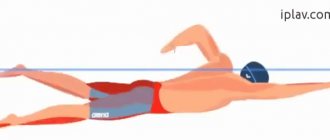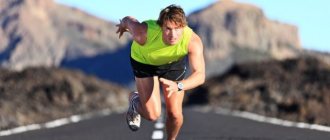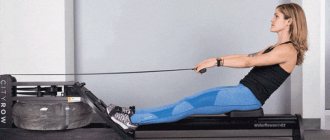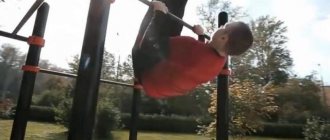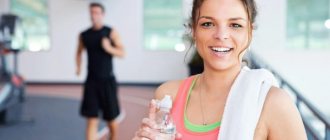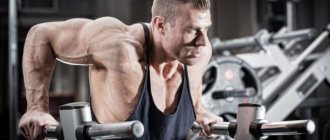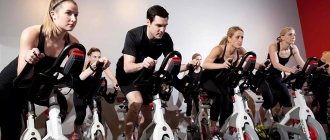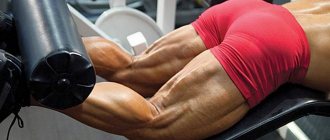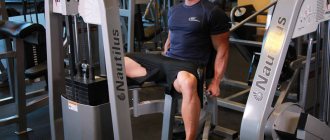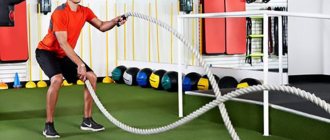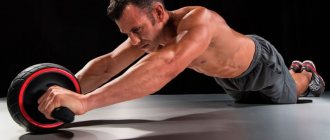Why do muscles grow after strength training?
In general terms, the whole process looks like this. You take a good weight, press, your muscles experience overload, microdamages appear in the muscle tissue. During the recovery phase, your body begins to patch up holes, starting the regeneration process. Muscle tissue gains volume to withstand increasing loads.
The result is an increase in lean muscle mass, the growth of which was caused by its damage. Well, the cause of damage is critical loads .
Exercises in water to pump up your abs
Water aerobics is one of the most effective methods of strengthening the abdominal muscles. Exercises that will help you pump up your abs, remove folds in the abdominal area, and make your waist aspen:
- While standing in the water, raise your legs bent at the knees to your stomach and lower them again. Hands can rest on the handrail or side. If there is no support, help maintain balance by rowing in the water. Repeat this movement every day 20-30 times, increasing the speed.
- Place your feet shoulder-width apart, place your hands on your sides and turn sharply in both directions with a large amplitude.
- Extend your legs while staying on your back in the water. Use your hands to paddle, helping you stay on the surface. Bend your knees and pull them towards your stomach, and then return to the starting position.
- Lying on your back in the water, alternately pull your legs to your right and then to your left shoulder. Stretch your arms to the sides and help yourself stay afloat.
- The following exercise can be done while lying on your back or standing. The hands help in holding the body in the water. Pull both legs towards your stomach, turning them left and right. You need to make 10 turns in each direction.
By regularly performing the above exercises, you can pump up your abs by swimming and remove fat from your sides in a relatively short period of time.
Why do muscles grow poorly while swimming?
Now let's look at swimming. While you are rowing, your arms experience some stress, but it is quite small. How many times can you make rowing movements with your arms - 10, 20, 50, 100 times? We're sure there are a lot. Probably as many times as you can lift a dumbbell weighing a kilogram . This is clear evidence that the load on the muscles is not significant and is unlikely to create the microdamage you need. The muscles simply will not receive the necessary stimulus for growth, even despite the large amount of work. The 1kg dumbbell row is a good analogy!
Another point is the similar mechanics of movements during swimming. It creates two problems at once. First: not all muscle groups are included in the work, and some are not included. Second: the body gets used to the same type of load and stops responding to it with muscle growth.
For example, let's take pectorals. As you know, the vast majority of exercises for this muscle group are based on pushing movements - this applies to all bench presses. The biomechanics of swimming are fundamentally different from this movement, which practically eliminates the load on the pectorals.
Why then are many swimmers pumped up - you ask? They work out in the gym - we will answer, or they themselves, if you ask them.
Swimming training - what is the benefit?
Without a doubt, swimming is one of the best types of physical activity for muscle development: strengthening the cardiovascular system, increasing muscle strength and performance. Thanks to regular training in the pool, ligaments and tendons acquire both strength and elasticity, and the muscles of the whole body become significantly more resilient.
At the same time, swimming has the greatest positive effect on the figure in adolescence - training in the pool helps not only to develop a broad back and strengthen the core muscles, but also promotes elongation in height due to a comprehensive improvement in posture. In other words, for teenagers, swimming lays the foundation that will help them build muscle and get pumped up quickly in the future.
Speaking about professional sports, we note that the rules of sports standards for swimming say that the title of candidate for master of sports can be obtained at the age of 10, and the title of master of sports - at 12 years. Due to such age limits, in practice, youth swimming categories are practically not registered - children involved in swimming can receive adult categories as early as 8 years old.
Swimming and muscle growth
It is necessary to understand that while swimming, the work primarily involves slow-twitch muscle fibers, while training in the gym or strength training with a barbell affects fast-twitch fibers. Despite the fact that from swimming the muscles develop, become stronger and more resilient, their volume and weight increase only partially.
If your main goal is to gain muscle mass, you need to train with heavy weights (for example, with dumbbells or a barbell), as well as perform low repetitions of the exercise (set of 3-4 sets of 8-10 repetitions). Among other things, following a high-calorie sports diet is important for muscle growth.
